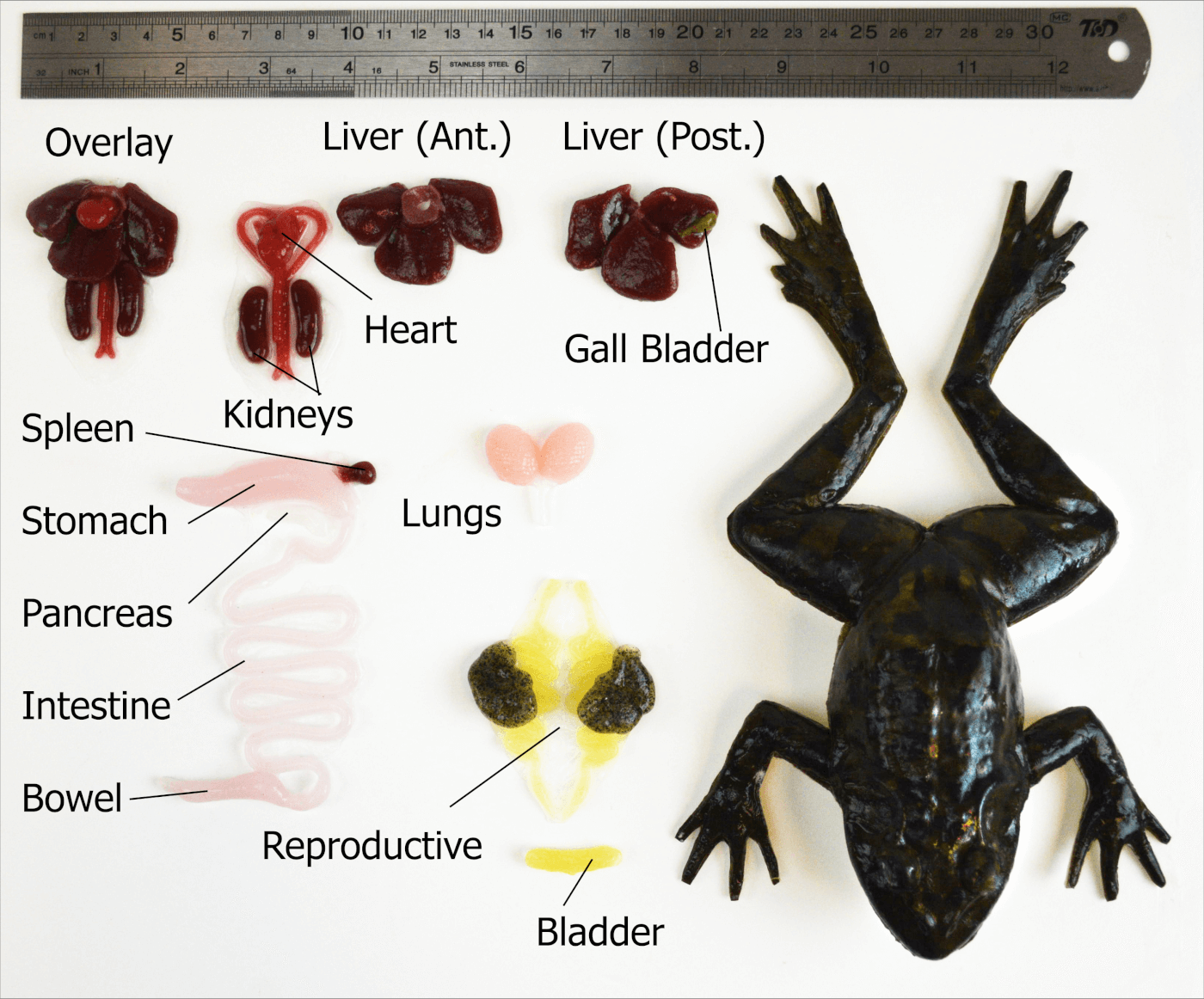
They can be found only in freshwater habitat. The habitat of a frog is quite varied and can be found all over the world, except maybe, of course, the Antarctic region. So, when it is very cold, they lay in the sun to get warmer and when it is very hot, they get into the water bodies to cool themselves. The body temperature is not constant and varies according to their surrounding environment. When these tadpoles fully develop they begin to live on land.Ī frog is a poikilotherm, which means that it is a cold-blooded animal. From the eggs, tadpoles emerge, which also live in water.

Their lives begin in water when they are eggs.
Frog body parts full#
The number of amphibians, like frogs, used for scientific research in Canada in 2018 was about 88,475! Frogs are often used in developmental studies because of their ability to undergo metamorphosis (one of their superpowers where they change from a tadpole into a full frog!). At AiSPI we would much prefer that frogs were no longer used for dissection – instead, students can learn all about how amazing living, breathing frogs are by doing respectful nature walks to find frogs in their natural habitat! However, we can easily learn about frog anatomy in lots of other ways that don’t require real frogs. In a teacher survey we did in 2017, we found that 79% of teachers in British Columbia still do animal specimen dissections in their science classes.


Many schools in Canada still dissect frogs as part of high school science education. In other words, an insect can be right in front of them, but the frog wouldn’t spot it if it stayed very still. However, despite their great range of vision, they can only spot a prey if it is moving. Next time when there is heavy rain, go to a nearby pond and see if you can hear frogs croaking! Male frogs will croak loudly in the presence of rain to attract female frogs, so they can copulate while the climate offers a fertile environment.įrogs can see all around them thanks to their bulging eyes. Male and female frogs will release sperm and eggs, respectively, into the water at the same time during copulation.

According to National Geographic, one golden poison frog has enough venom to kill ten full grown men! Woah!įemale frogs lay eggs that are fertilized outside their bodies. The most poisonous of them is the golden poison frog (pictured above).
Frog body parts skin#
Poison dart frogs (commonly found in South and Central America) are known to have bright coloured skin that secretes toxins – this protects them from predators. Although frogs are cool, you should be careful when you see one in the wild, especially if they have bright coloured skin.


 0 kommentar(er)
0 kommentar(er)
